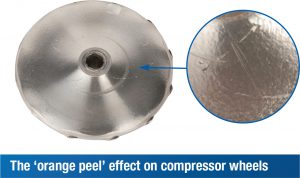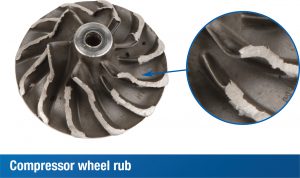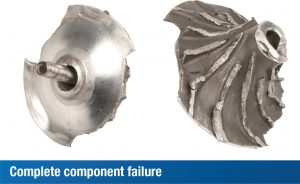So, What Causes Overspeeding?
- Engine modifications including ‘chipping’ or ‘over-fuelling’;
- Inconsistent flow of air into the turbo – this can be caused by a tear in the air hose or it becoming completely detached, or by restrictions in the air intake filter or pipe work;
- The wastegate or VNT mechanism has been set incorrectly;
- Worn injectors;
- Installing an incorrect turbo;
- Loss of signal to the SREA (Simple Rotary Electronic Actuator) for the wastegate or VNT control;
- Operation at altitude.
Visual Effects Of Overspeeding
- The ‘orange peel’ effect;
- Inducer blade damage can be a consequence of housing rub;
- Staining due to oxidation;
- Partial loss of blades;
- Burst wheel.
The ‘Orange Peel’ Effect Explained:
‘Orange peel’ effect on the back face of the compressor wheel is created by expansion and contraction. When the compressor wheel overspeeds it grows in size. This expansion causes cracks between the grain boundaries of the material. In mild cases the component will return back to its original state (like elastic) but in most cases these cracks begin to grow and eventually part of the hub can break away.



